|
Recently, I had the opportunity to attend one of Washington's biggest anime convention; Sakura Con! Two lovely ladies, Ku and Ysa, hosted an "Intro to Visual Kei" panel and it was a great learning experience, or re-learning experience, on the history of visual kei and other cool facts involved with the scene. Here's a bit of what was covered in the panel with a dash of information I have in the back of my mind. They began with a collage filled with all kinds of Visual Kei bands, which they also used as a background for their presentation. The audience was allowed to shout out any bands they saw and recognized. Of course, my friend and I got to the edge of our seats and immediately named out the obvious Gackt, the GazettE, An Cafe, Nightmare, Miyavi, Larc~en~Ciel, Malice Mizer, and hide. The two proceeded to show a series of music video clips from the grandfather VK band, Deep End, leading up to today's modern offspring of Visual Kei bands. Ku and Ysa then began explaining the history of VK by giving us a timeline of the short 30 year history. It began in the early 1980's with Japa-metal bands like Buck-Tick, followed by Nu Japa-metal in the mid 1980's, then the X Japan era in 1989. It's common to think that X Japan was the first VK band but they blew up the scene because their crazy, western influenced rock n roll lifestyle, and of course Yoshiki's Extasy Records. Within the timeline there was a list of band eras from oldest to most recent; Japa-metal, Golden Age, Ice Age, and Neo Visual Kei. A surprising fact I learned from this panel was the original meaning of Visual Kei back when it first began. Literally every band that appeared in SHOXX magazine was labeled and seen as Visual Kei. To this day, that view has changed and Visual Kei has many definitions depending on the person but it generally stays around the same idea; crazy makeup, hair, and costumes. But Visual Kei itself has many sub-genres which were described during this panel. A few sub-genres that were mentioned were kotekote, osare or oshare, iryou, soft-v, and Nagoya. However, the terms mainly used in this newer modern era would just be "kirakira" or "arbare". After discussing about the history, Ku began presenting on what fans do during lives, VK related events, and other "cool stuff" related to VK. She began by explaining the ever popular furitsuke, something most foreign fans might not be familiar with. In Japan, furitsuke are specific moves that you do during a specific part of a song during a live show. There are multiple types of furi and the basic ones that are also done in the states are head-banging and the wall of death. Head-banging is pretty much self-explanatory, but the wall of death is when the audience splits to two sides and on the vocalist's mark, the fans run into each other and go crazy. Some Japan specific furi that were explained are futon, circle mosh, and saku. Futon is when the fans in front row literally hang over the barricade and they're in a shape of a futon when place over the balcony to hang dry after being washed, hence the name. Other fans behind them will run up and get the chance of being closer to the band before running back to their spot. Circle mosh and mosh is not at all like the moshing overseas in the states. Circle mosh is when the fans literally just run around in a circle. Both circle mosh and mosh in Japan for Visual Kei is basically less crazy and less violent, or not violent at all. Lastly, saku is a nice and calm furi where you extend both arms towards a member and call out their name. It's also done when a band member is doing a solo. Though there are many other types of furi, these are the most common ones. If the song requires a more complex furi, the band will usually make a video of them performing the furi Another thing that was explained during the VK 101 panel was "Anatomy of VK Lives" which includes tickets, entering rules, irimachi/demachi, and encores. Tickets for lives will have numbers on them determining where you will be in a live, whether it's seated or not. This is because when entering a venue, a staff member calls out each ticket number individually and fans go in by that number, therefore there's no need to arrive 8 hours early to line up for a live. Because of this ticketing and entering system, it's best to have a low number and often you can find fans trading or selling tickets, it gets pretty intense. Besides that, there is the option of irimachi which is when fans arrive early to the venue and wait for the band to arrive in hopes of meeting them. Demachi is the same concept except it's when fans wait outside after a live has ended. Both terms irimachi and demachi come from the Japanese words for arriving and leaving. Some venues and bands do not allow these things so it's best to research on what is and isn't allowed. Then there's the encore. In Japan, the encores are always expected and so bands are always planning ahead for them. During this time the band members will change, freshen up, and do whatever they have to do before playing another song or two. The last category Ku and Ysa discussed with us were events and activities that VK fans have outside of lives. These "Other Cool Stuff" consisted of shop events, in-store events, stamp rallies, and guerilla lives. Shop events are where a band member wears the shop's apron and work as the cashier to ring up items for fans, usually for around an hour. Shop events normally happen when a band releases new albums or singles. Next are the more common in-store events, which can be either an acoustic live, a hand shake event, a Q&A, or 1 shots/6 shots. 1 shots or 6 shots are when you get your photo taken with either 1 band member ( 1 shot) or all band members (6 shots) and it will be taken by a Polaroid so you get your own personal little cheki. Stamp rallies are where fans are running around the city going to select locations to get a special stamp on a stamp card and they will receive a special reward when they fill up the stamp card. Lastly, there are guerilla lives which are secret lives. Band members will often post very discreet clues in social media directing fans to a location in Japan where they will hold a pop up live. Some bands who have done this are the GazettE, SuG, Alice Nine, and Ensokou. Though if the live gets too big and populated, the Japanese police force will come shut it down quickly *cough* the GazettE *cough* And that was all we learned at this awesome panel! I also want to mention that throughout the panel they would ask for the audience to engage in activities or answer questions and give away awards for them. The first one they did was where they asked the audience to define Visual Kei in our own words. I shot up my hand immediately along with another person and we were able to go up to their table to choose any free magazine they laid out for us (CLUB Zy, Zeal Link, etc). I decided to go for a Zeal Link magazine with Mejibray and Born on the front and back covers. The other activity they did, which was quite fun, was a pop quiz game of "Find the chick". Pictures of VK bands were shown and one person per photo had to pick out who they thought was the female in the band. All female VK band Danger Gang was placed in the slides as a trick question and gave us all a good laugh since technically they weren't wrong but weren't 100% right either.
Overall I had an amazing time at this panel and Ku and Ysa did a wonderful job. They explained the history of Visual Kei in an easy way to understand and included all aspects of the scene. I'm sure that everyone that attended has learned a lot and I hope you did too from this overview! You can view the photos above for their resources. I would gladly attend another one of their panels. -Reida
0 Comments
|
SearchContributors◆ Emily
◆ Ivan ◆ J.D. ◆ Janette ◆ Manuel Archives
June 2025
|
© 2014-2025 A-to-J Connections. All Rights Reserved.

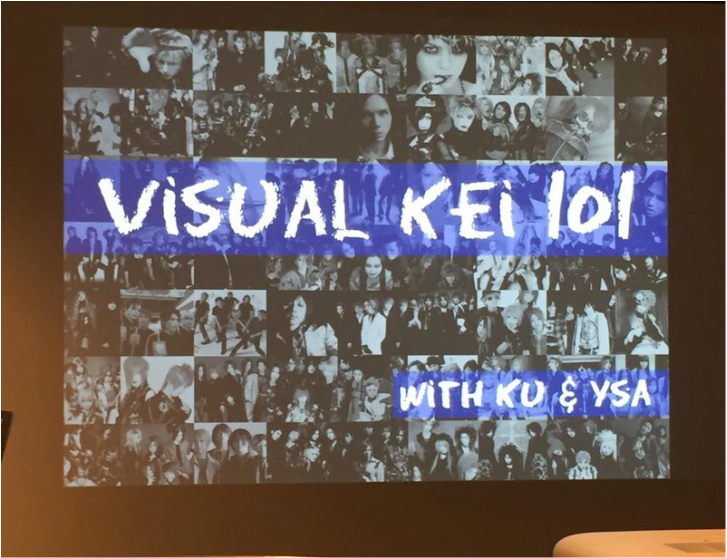
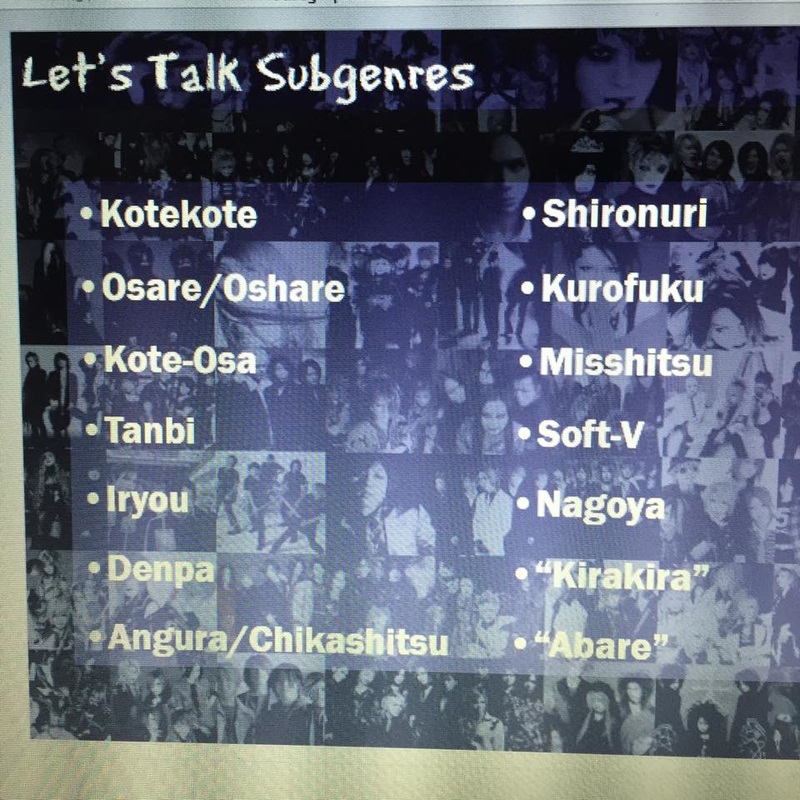
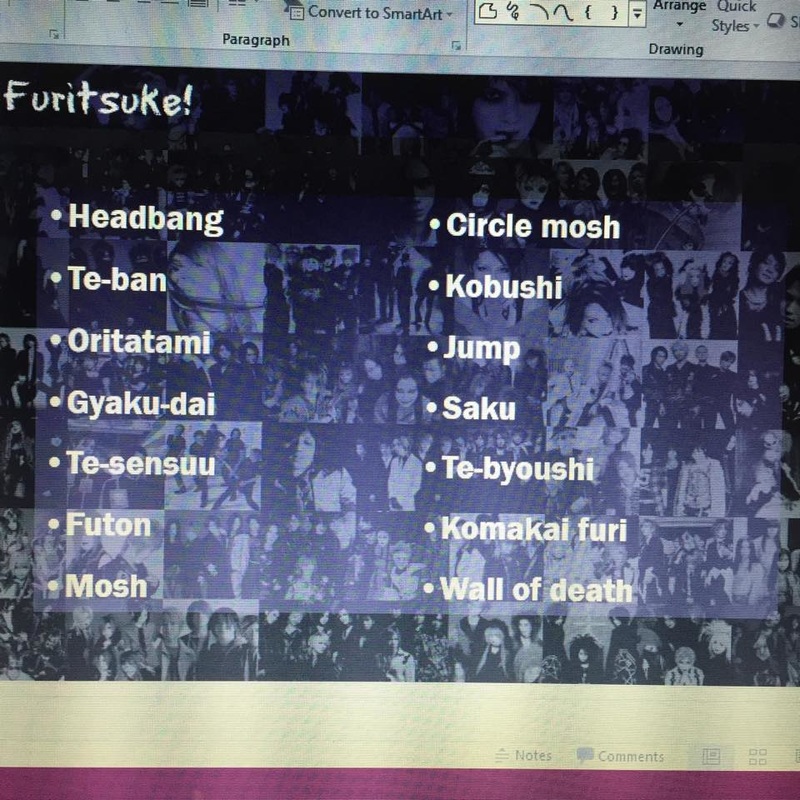

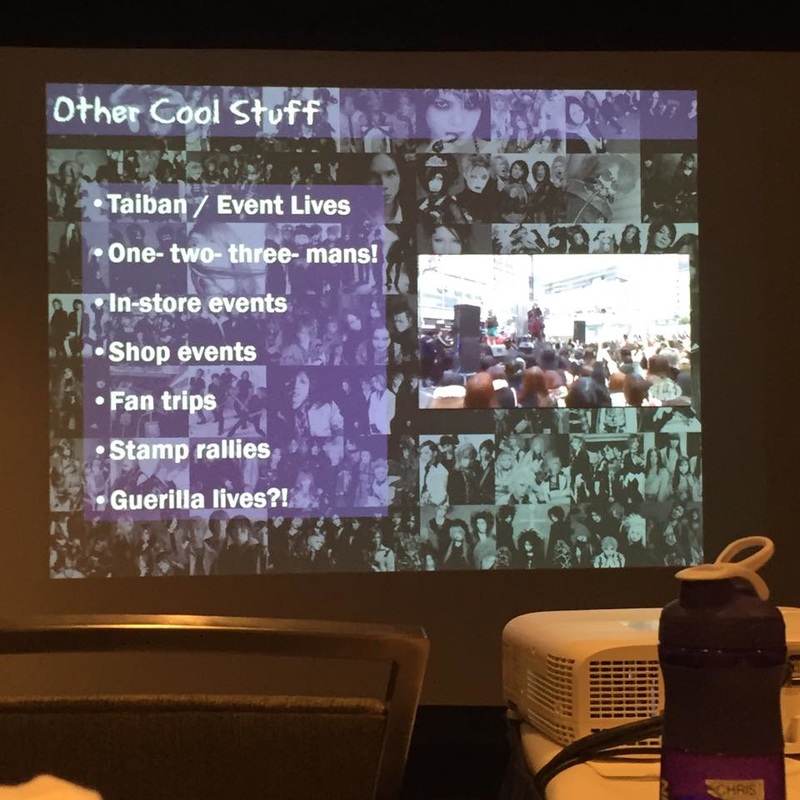
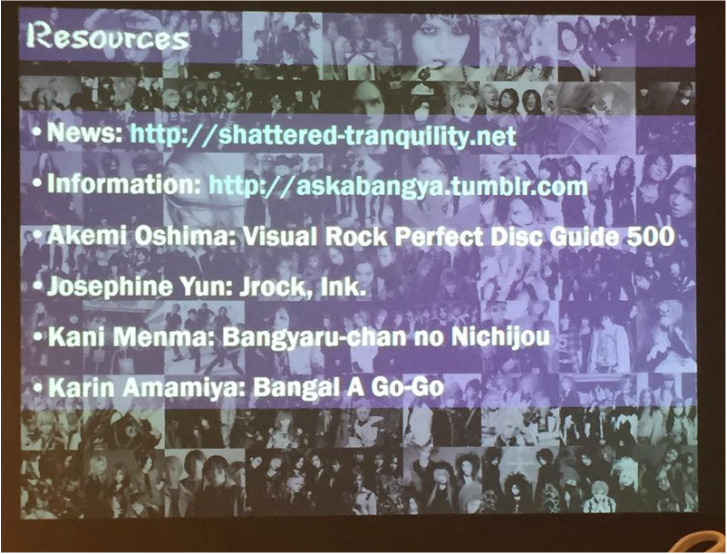

 RSS Feed
RSS Feed